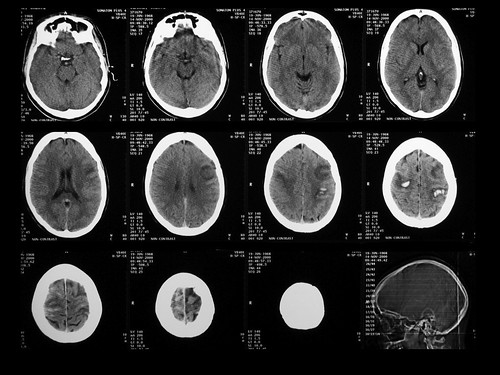 In the largest ever genetic study of its kind, scientists have confirmed a link between two genes and the occurrence of Alzheimer’s disease— an illness which currently robs some 417,000 people in the UK of critical memory and brain functions, and which eventually leads to death. The lead researcher, Professor Julie Williams, believes that the discovery will enable genetic screening to determine risk, as well as new treatments which could ‘reduce the chances of people developing Alzheimer's by almost 20%.’
In the largest ever genetic study of its kind, scientists have confirmed a link between two genes and the occurrence of Alzheimer’s disease— an illness which currently robs some 417,000 people in the UK of critical memory and brain functions, and which eventually leads to death. The lead researcher, Professor Julie Williams, believes that the discovery will enable genetic screening to determine risk, as well as new treatments which could ‘reduce the chances of people developing Alzheimer's by almost 20%.’Image: robhengxr - Flickr





4 comments:
So is Alzheimer's a genetic disease?
This set of researchers doesn't suggest that Alzheimer's is purely genetic. The discovered genes (APOE4, CLU and PICALM) are clearly associated with added risk for the disease, but they cannot explain 100% of cases, suggesting that there are other mitigating factors or that a whole suite of genes and environmental factors may be involved in very complex ways (known as multifactorial or polygenic disorders), as in the case of diabetes and many forms of heart disease.
How far off are genetic tests for these genes? And how will knowing about these genes help scientists to find treatments for Alzheimer's?
Genetic tests for yet another gene implicated in Alzheimer's have been available since 1993. The Increased risk from possessing that gene is anywhere from 50 to 100%, whereas estimates on the increased risk of possessing one of the newly discovered variations is somewhere around 20%-- so it would be a much less useful predictor of who would develop the disease.
Still, the development of genetic screening for single-gene disorders is extremely rapid these days, so attending to all genetic risk factors may soon be possible. Since most of the genes fingered by these studies are suspected to play a role in regulating the buildup amyloid plaques (which cause the negative effects of the disease), having more than one of the harmful variations could presumably multiply risk and speed up the onset of the disease.
Post a Comment